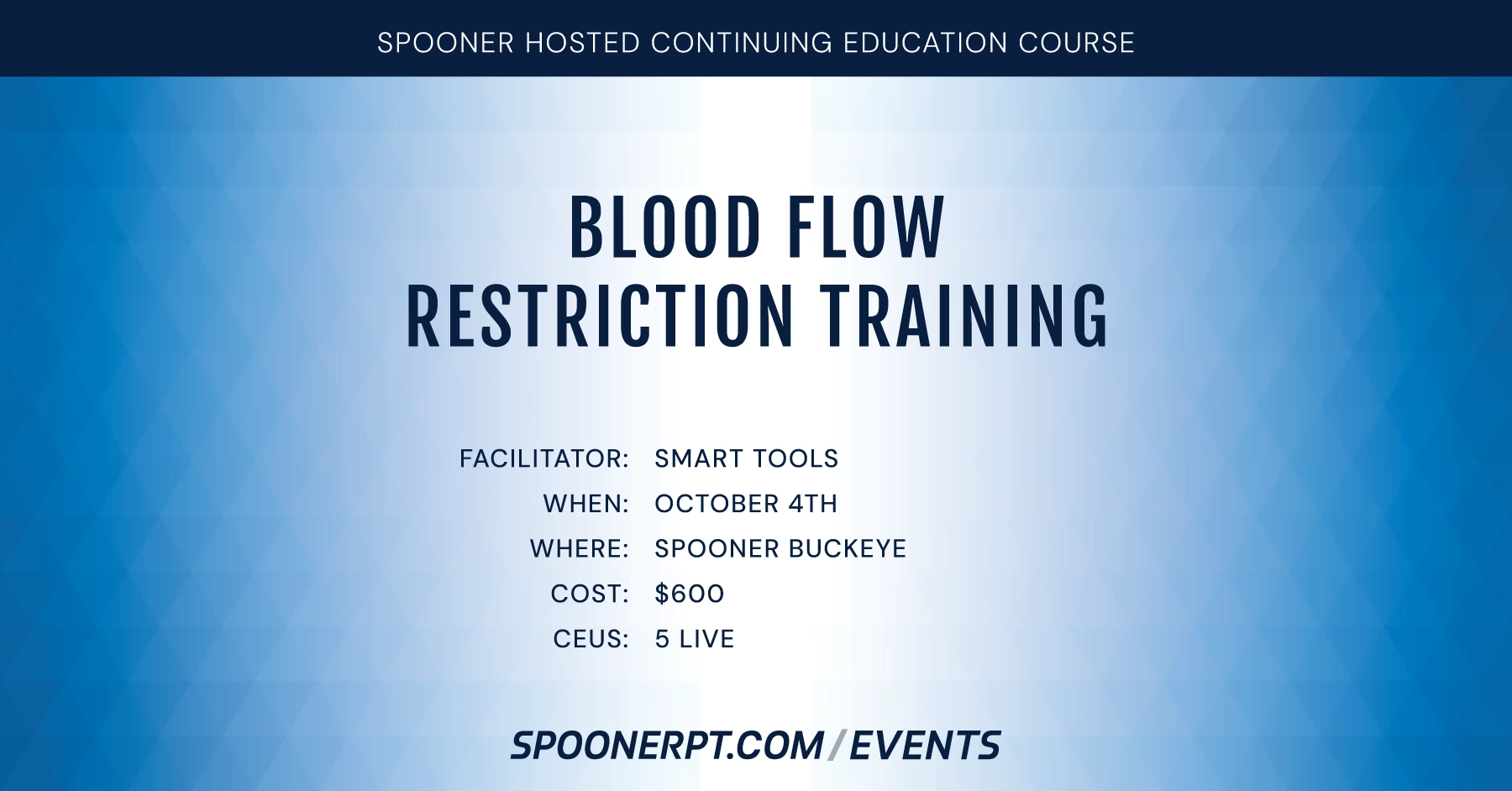
HOST: Level 1 Blood Flow Restriction (BFR) Training Certification
October 4 @ 8:00 am – 6:00 pm

Course Overview
Blood flow restriction rehabilitation (BFR) is a powerful tool for the rehabilitation and fitness professional. With over 1000 peer-reviewed articles in the scientific literature the efficacy can not be denied.
By using proper BFR techniques to exercising limbs you can improve strength, hypertrophy and endurance changes while using a very light load within a small space like an athletic training room or small treatment room.
Course Objectives:
By the end of the course, attendees will be able to:
- Discuss the benefits of blood flow restriction (BFR) training
- Discuss Indications and Contraindications of BFR Training
- Demonstrate safe and effective placement of BFR cuffs
- Compare and contrast different uses of BFR from bed ridden to athleticperformance training
- Critically Analyze the utility of BFR in the rehabilitation setting
- Develop and devise a training program for a potential patient or client
Course Outline:
Hour 1 – Introduction
- What is Blood Flow Restriction (BFR) Training
- Why would a clinician use BFR – Increase Strength/Hypertrophy/Cardiovascular function in a rehab setting
- Why would a fitness fanatic use BFR – Increase Strength/hypertrophy/Recovery/cardio – in a gym/crossfit setting
- Case Studies
Hour 2 – The Science Behind BFR Training
Hour 3 – How Does BFR Work?
Hour 4 – Who benefits from BFR?
- Who should avoid BFR?
- Indications/Contraindications
- Programming BFR Training
- High intensity Training (def.)
- Low Intensity Training (def.)
- Establishing a 1RM using a 10RM test f. Reps and Sets and total volume
Hour 5 – Using BFR Cuffs
- Compression Scale –
- Pneumatic Compression Scale
- Upper Extremity Application – Zone
- radial pulse
- Lower Extremity Application – Zone
- posterior tibialis pulse
